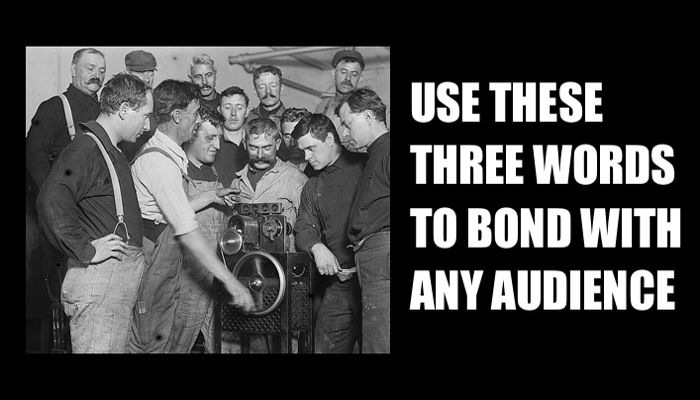
Have you ever demonstrated something? Perhaps you wanted to show off a new gadget or convince a friend to download your favorite app? How’d it go? If your first demo experience was anything like mine, you likely crashed and burned.
I learned the art of giving a software demo almost thirty years ago after a company, Analog Design Tools, hired me as an applications engineer to support their circuit simulation software package called The Analog Workbench. The reason my first demo failed was because I mistakenly believed that my power-user knowledge would translate into a good demo. What I didn’t understand at the time was that tool-use and and tool-demos are very different things—resulting in a demo script that sounded something like this:
“The Analog Workbench is great. You can do this and that. I like to use this thing over here. Oh! And here’s something really cool that you can do.”
Looking back on that first demo, it’s clear that I didn’t understand the difference between narrative and story.
Luckily, my audience that day was a co-worker instead of a customer, who assessed my performance with brutal honesty. “Although you showed all of the right features, you missed the most important part of any demo…context. Why should a customer care about a feature? What does it mean to them? How will it make their life better?”
I limped back to my desk and thought about what he said. Demos aren’t about the tool. They’re about getting the audience to see themselves using it.
A few days later, my co-worker stopped by my office. “The Sales manager wants you out in the field ASAP, but you need to give him a demo first. Are you ready?”
“Yes,” I said unconvincingly.
“You’ll be fine,” he reassured. “Just remember: context.”
The second demo audience consisted of my coworker and the sales director. I opened by introducing myself as the company’s newest applications engineer who’s been using the Analog Workbench for over two years. I then looked at my co-worker and asked, “Have you ever had to calculate a sensitivity analysis by hand?”
He smiled, knowing exactly where I was going. “Yes,” he played along.
“It used to take me days to crank all of those calculations manually,” I continued. “And that’s only if I didn’t make a mistake. Sometimes it could take an additional day to find and fix a math error. Has this ever happened to you?”
My coworker nodded. The sales manager leaned in.
“Now, imagine if you could replace all of those manual calculations with the push of a button.” I clicked the mouse button and the computer started chugging. “And imagine if that button not only initiated all of your sensitivity analysis calculations—correctly—but it also plotted the results for you. Well,” I said just as the screen revealed a ranked list of components, “now you can.”
I spent the rest of the demo showing how the Analog Workbench could make their circuit design lives easier, just as it had mine.
“So, what do you think?” my co-worker asked the sales manager.
The sales manager slapped the table. “He’s a natural. Let’s get him out there.”
Learning how to give a demo set the roots to my career as a business storyteller. It’s where I learned to prioritize the audience’s needs over my own. It also lead to a presentation technique that I’ve used ever since. Whenever I need to bond with an audience, I open with three simple words:
“Have you ever…?”
This triple-threat phrase:
- Establishes a shared experience between audience and presenter
- Carries credibility (you’ve been there before)
- Helps those unfamiliar with the situation experience it vicariously through you
So, the next time you need to bond with an audience, help them make your story their story through three little words.
“Have you ever…?”
Photo Credit: Bain News Service, Publisher. Firemen’s School – demonstrating magneto. , ca. 1910. [Between and Ca. 1915] Photograph. Retrieved from the Library of Congress, https://www.loc.gov/item/ggb2004009610/